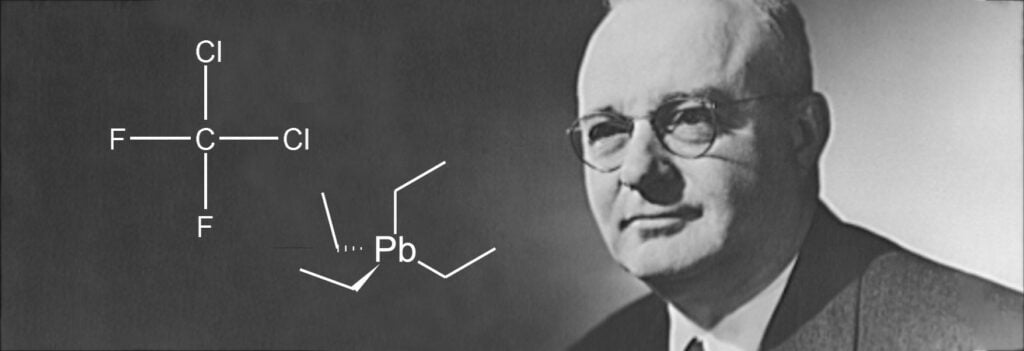The petroleum-based fuel gasoline is made from crude oil and other liquids. Gasoline is mainly used as an engine fuel in automobiles. But in the early 1920s, tetraethyllead was discovered and mixed with gasoline to minimize internal engine knocking. But did you know the engineer who discovered tetraethyllead tried to prove that it was absolutely safe to use?
Despite early concerns about the safety of leaded gas, the engineer who discovered tetraethyllead tried to prove its safety by pouring it over his hands and inhaling its vapor. He claimed that he could do so every day. Unfortunately, he ended up with lead poisoning and had to take a leave of absence.
Who was Thomas Midgley Jr.
Thomas Midgley Jr., a chemist from the United States, discovered the use of tetraethyllead (TEL) as an additive for gasoline and chlorofluorocarbons (CFCs) and had over a hundred other patents. While he was praised for his findings at the time, his legacy is now viewed as significantly more mixed due to his advances’ serious detrimental environmental consequences. According to some, Midgley had more impact on the atmosphere than any other single organism in Earth’s history. (Source: Health and Environment)
What is Tetraethyllead?
To control engine knock, Midgley tested several compounds. On December 9, 1921, Midgley mixed TEL with the fuel and ran the one-cylinder test engine. Surprisingly the engine knock was gone. Shortly after, GM and Standard Oil of New Jersey, the forerunner of Exxon, founded the Ethyl Corporation to produce TEL.
Although the company’s name was carefully designed to avoid the word lead, factory protections were less effective. Workers at the Ethyl facility suffered from lead poisoning not shortly after it opened. Midgley himself was poisoned by the lead and took a trip to obtain a substantial quantity of fresh air. Ironically, he would discover freon, a refrigerant that cooled indoor air for nearly half a century. (Source: Health and Environment)
One Step Forward in the Fuel Industry
Lead is a harmful contaminant, especially for children. Its use in gasoline polluted the air in towns and cities worldwide, posing severe health risks.
Throughout most of the first half of the twentieth century, there have been concerns about the health effects of leaded gasoline. However, they were soon rejected because no meaningful empirical data could support these concerns. The first clinical research on lead poisoning in people didn’t come out until 1969. Evidence of the magnitude of lead poisoning and its potential link to poor cognitive function in children grew from there.
As a result, in the 1970s, numerous countries began to phase out leaded gasoline. In 1983, the US Environmental Protection Agency released standards to decrease lead contamination. Japan was the first country to outlaw it in 1986, six decades after it was first introduced. Algeria became the last country to outlaw it three and a half decades later, in 2021.
It took a long time for the evidence to be discovered, but once it was, the speed with which some of this progress was astounding. The United Nations Environment Programme (UNEP) initiated a global campaign in 2002 to eradicate leaded gasoline from road vehicles. (Source: Our World in Data)
